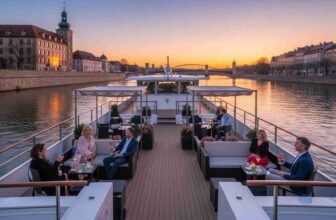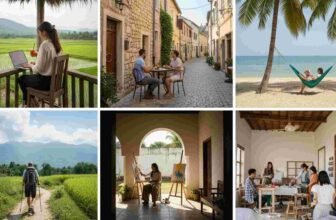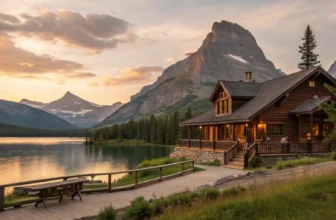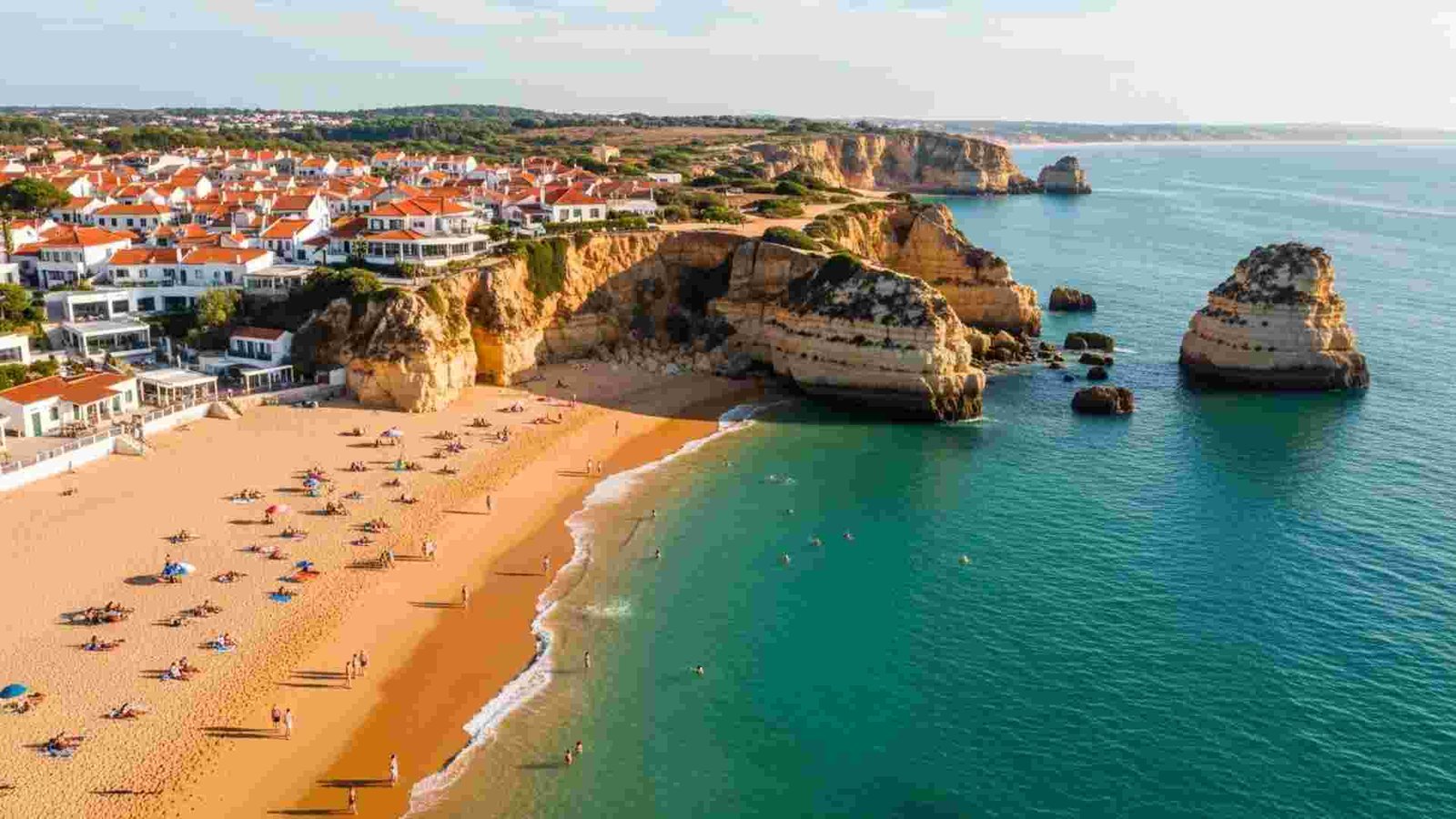

Salt on the breeze, tiles glinting like fish scales, a guitar note lingering in warm dusk. Travelers chasing wonder, value, and ease are finding all three in a corner of Europe where days unspool slowly and the nights feel close to magic.
With more nonstop flights, friendlier prices, and a welcome that’s quietly generous, it’s become the go-to escape for Americans hungry for discovery without the drama. Here, cliff paths lead to secret water, kitchens turn the ocean into poetry, and history brushes your sleeve. Follow these twelve reasons and you’ll see why—and how—this trip can change your rhythm.
1. Lisbon’s Effortless Blend of History and Modern Cool

And there’s a reason Lisbon stands out. In 2024 the city welcomed about 8.52 million visitors, of which 6.54 million were international tourists—a ~5.1 % increase over 2023. The city is recovering beyond pre-pandemic levels.
Walking through Lisbon feels like jumping between centuries. One minute you’re on cobbled lanes in the Alfama district hearing Fado echo from a basement tavern; the next you’re riding the modern tram or hopping into a chic co-working café in the Parque das Nações. That blend of old and new is one of its biggest draws.
Practical Information:
- Peak / off-peak seasons: June-Sept = busiest; Nov-Mar quieter.
- Best ways to reach/explore: Direct flights from major U.S. cities; within the city use tram, metro, walkable historic zones.
- Ideal duration: 3-4 full days to cover major districts (Alfama, Baixa, Bairro Alto, Belém) and get a feel for “modern Lisbon”.
- Must-try local experiences: Ride Tram 28 through the old hills, visit Jerónimos Monastery (UNESCO), sample a pastel de nata in Belém.
- Budget considerations: For moderate travel expect ~€120-200/day; for upgraded luxury ~€250-400+.
- Cultural etiquette tips: Locals appreciate a few Portuguese words (“Bom dia”, “Obrigado”) and quiet respect in historic churches.
- Photography opportunities: Sunset from Miradouro da Santa Catarina, the 25 de Abril bridge over the Tagus, the pastel-coloured rooftops of Alfama.
2. Affordable Luxury Living and Coastal Escapes
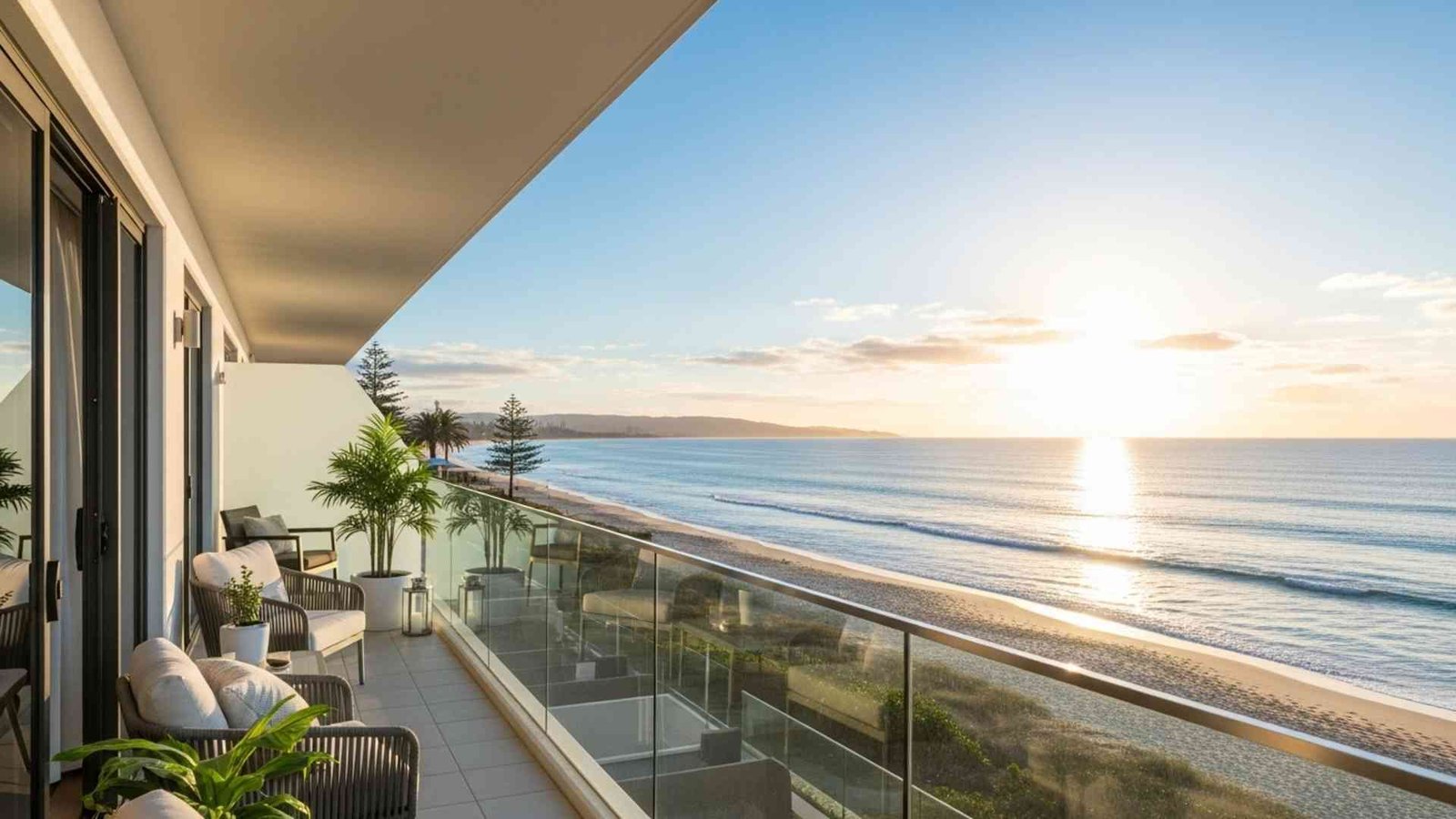
One thing that surprises many U.S. visitors: Portugal lets you experience Western-European luxury without Western-European price tags (at least compared to many capitals). For example, Portugal was ranked the 6th most affordable country to buy a luxury second home. The coastal regions especially—from the Algarve to the Silver Coast—offer stunning Atlantic view living, villas, beach clubs and high-end resorts.
But “affordable luxury” also means good value daily travel. A nice meal in Lisbon might cost ≈ €25 per person including drink, whereas comparable Western European spots cost much more. On top of that the coastline is accessible: from Lisbon you can drive or hop a short train ride to seaside towns and countryside, making it easy to pair city + coast.
Practical Information:
- Peak / off-peak seasons: Summer (July & August) draws full beach crowds; late spring/early autumn (May, Sept) give you great weather with fewer tourists.
- Best ways to reach/explore: Fly into Lisbon or Faro (for the Algarve); rent a car for the coast; trains/buses serve many towns.
- Ideal duration: 5-7 days if you want city + coast; 3 days if just the coast.
- Must-try local experiences: Stay in a seaside villa, do a clifftop dinner overlooking the Atlantic, surf or paddleboard on the Silver Coast.
- Budget considerations: Beach-front resort rates vary widely; luxury still less expensive than comparable spots in France/Spain.
- Cultural etiquette tips: Beach towns may have slower pace — dinner after 8 pm is common. Respect local fishing communities.
- Photography opportunities: Golden cliffs of the Algarve at Ponta da Piedade; surf shots in Nazaré; sunset from Cascais bay.
3. The Golden Visa and Digital Nomad Boom
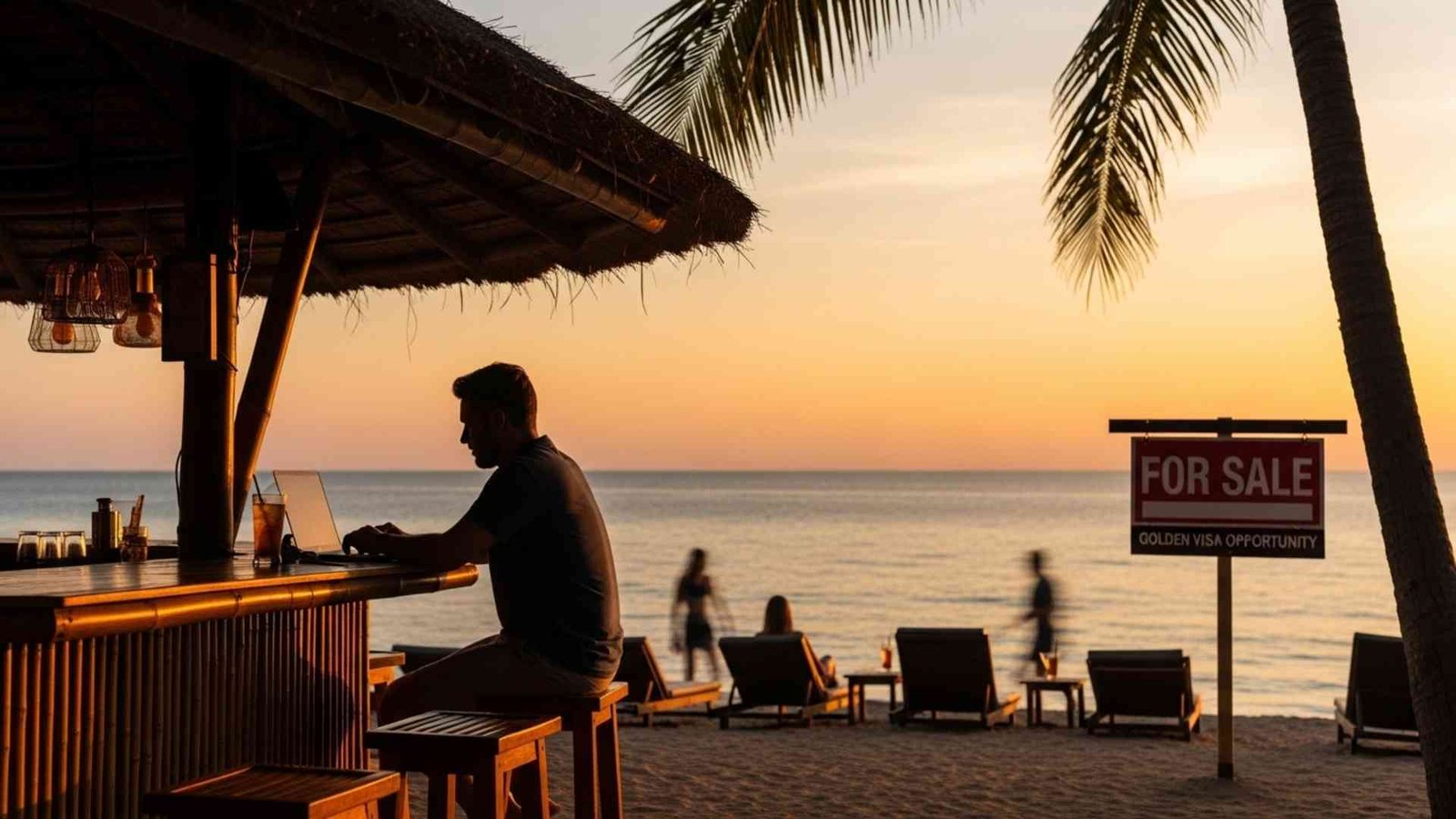
Portugal has become a major hub for remote workers and global citizens. The D8 Digital Nomad Visa offers non-EU/EEA citizens the chance to live and work remotely in Portugal. As of 2025, applicants need to earn at least €3,480/month. It’s been reported that Portugal ranks 7th worldwide for digital nomad attractiveness (score ~84.07).
Meanwhile, the older “Golden Visa” (investment-based residency) had by 2023 granted 12,718 main applicants and 20,424 dependents. What this means for travelers: you’ll find coworking spaces, good WiFi, remote-friendly cafés, especially in Lisbon and coastal towns.
Practical Information:
- Eligibility / access: The D8 visa requires documented remote work for non-Portuguese employer or clients abroad; salary threshold applies.
- Best ways to explore: Use Lisbon or Porto as base; check remote-work friendly housing; coworking cafés popular in central Lisbon.
- Ideal duration: If you’re visiting, a month or two makes sense; if relocating, plan for longer to assess lifestyle.
- Must-try experiences: Work from a café in Lisbon’s Chiado, then head out weekends to beach or countryside; join a digital-nomad meet-up.
- Budget considerations: Cost of living still moderate compared to many Western-Europe cities; but rising demand means prices creeping up.
- Cultural etiquette tips: Be aware local pace of life—work from cafés but also respect local norms (meals later, rest afternoons, etc.).
- Photography opportunities: Laptop on a rooftop café with city view; coworking inside historic Lisbon building; sunset beach shots after work.
4. Year-Round Sunshine and Mild Mediterranean Climate
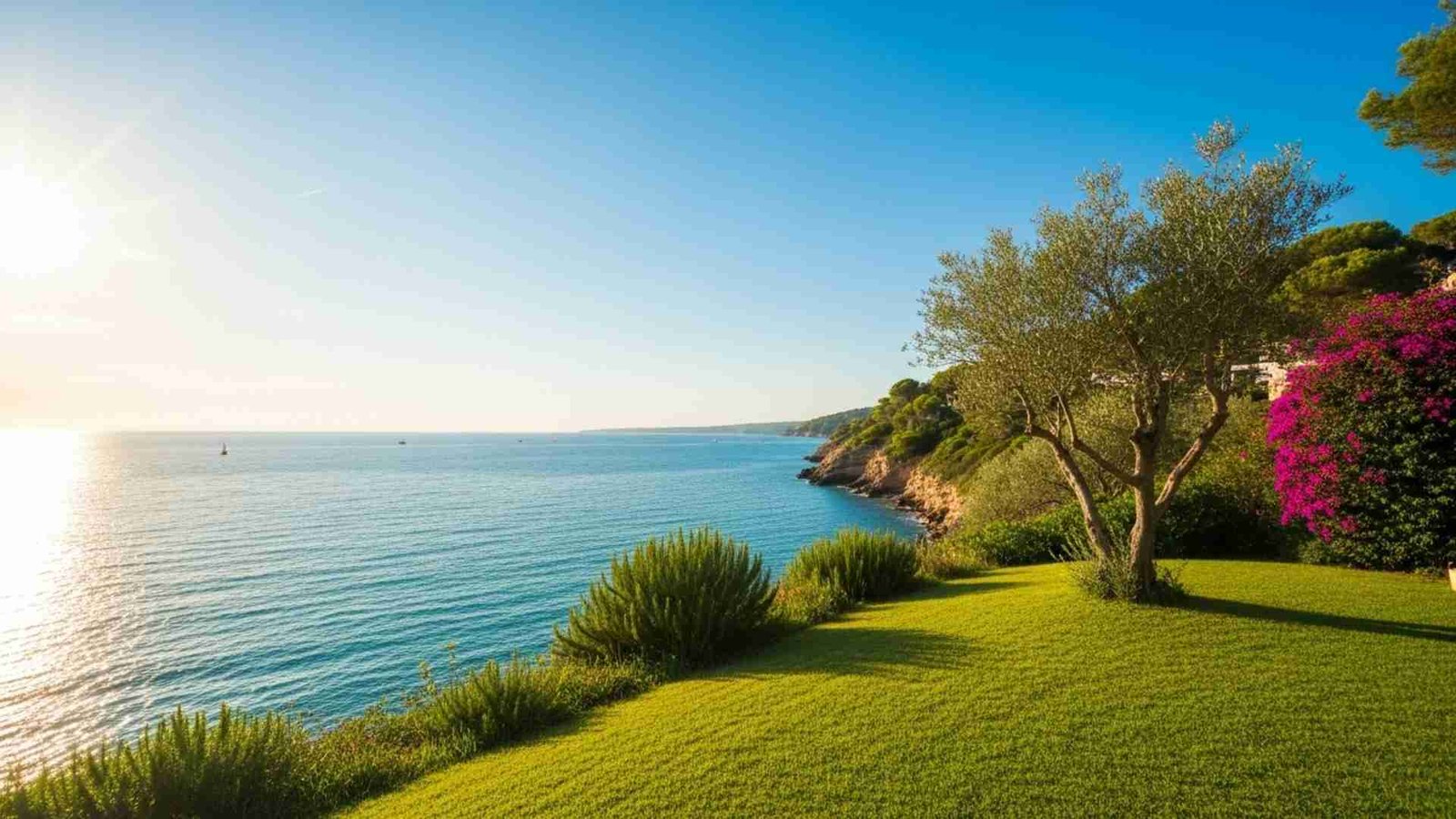
Portugal’s climate. It delivers year-round mild weather, especially compared to many Northern European destinations. For example: in the Algarve region, even late autumn and early spring tend to have comfortable temperatures and plenty of sunshine. That makes shoulder seasons really enticing.
The tourism accommodation sector recorded 9.2 million guests and 23 million room nights in Q2 of 2025, up ~4.4 % and 4.2 % respectively year-on-year. And forecasts suggest tourism growth of ~9 % expected in 2025. For travelers used to chasing Mediterranean sun for a few weeks, Portugal offers many more months of warmth without the extremes of summer heat everywhere.
Practical Information:
- Peak / off-peak seasons: Summer still busiest; spring (April-May) and autumn (Sept-Oct) give great weather + fewer crowds. Winter still mild in many coastal spots.
- Best ways to reach/explore: Choose coastal base (Algarve or Silver Coast) or Lisbon; pack layers for evenings even in spring/fall.
- Ideal duration: 7-10 days if you want to enjoy beach + city; 10-14 days if mixing coast + inland.
- Must-try experiences: Enjoy a beach brunch in early October, take a hillside vineyard walk in spring when wildflowers bloom, plan a sunrise photo session with crisp light.
- Budget considerations: Shoulder season may offer better accommodation deals; summer premium still applies.
- Cultural etiquette tips: Outdoor cafés remain lively all year; locals adapt to weather, so cafés may close earlier in winter—check times.
- Photography opportunities: Soft golden light of early morning along the coast, drifting mist over vineyards, empty off-season beaches in November.
5. Porto’s Wine Culture and Riverside Charm
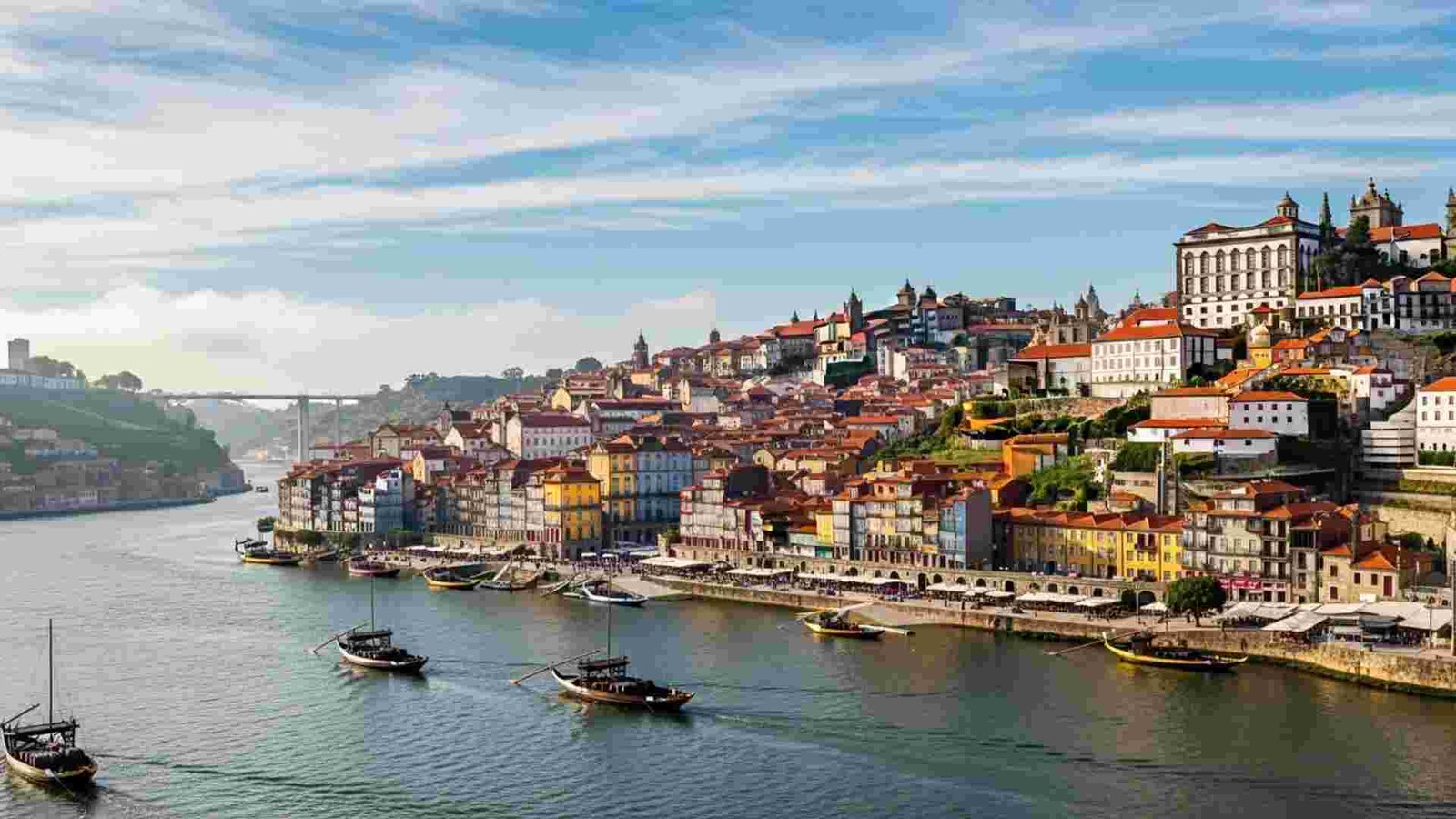
Stepping into Porto is like walking into a postcard. Located where the Douro River meets the Atlantic, the city has old-world charm, strong character and a serious wine pedigree. For instance: in 2023 the Porto region recorded 5.9 million overnight stays, up significantly from 4.8 million in 2022. The wine region itself (Alto Douro) is a UNESCO World Heritage site.
You can go from historic train station mosaics at São Bento, to crossing the iron Dom Luís I bridge, to descending into the wine cellars of Vila Nova de Gaia for a tasting of port. It’s not just sightseeing: this city invites slow walks, rich meals, and evenings by the riverside. And yes, the wine culture adds that “experience” factor many travelers crave.
Practical Information:
- Peak / off-peak seasons: Summer still busy; spring and autumn offer fewer crowds and great golden light in the Ribeira district.
- Best ways to reach/explore: Fly into Porto airport; to explore nearby Douro Valley vineyards rent a car or join a river-cruise tour. Walk the historic centre on foot.
- Ideal duration: 2-3 days in Porto city + 1-2 days in the Douro wine country if you can.
- Must-try local experiences: Port-wine cellar tour in Gaia, sunset riverside dinner in Ribeira, ride a vintage tram up to the Miradouro da Vigia do Ribeira.
- Budget considerations: Porto is slightly cheaper than Lisbon in many respects; good value for food, wine and lodging.
- Cultural etiquette tips: Pleasant and informal—but if you join a wine-tour, tip appropriately; dress smart-casual for evening riverside dining.
- Photography opportunities: Blue-and-white tile mosaics inside São Bento station, reflections of coloured houses along the Douro, vineyard terraces in the Douro Valley.
6. The Algarve’s World-Class Beaches & Clifftop Drama
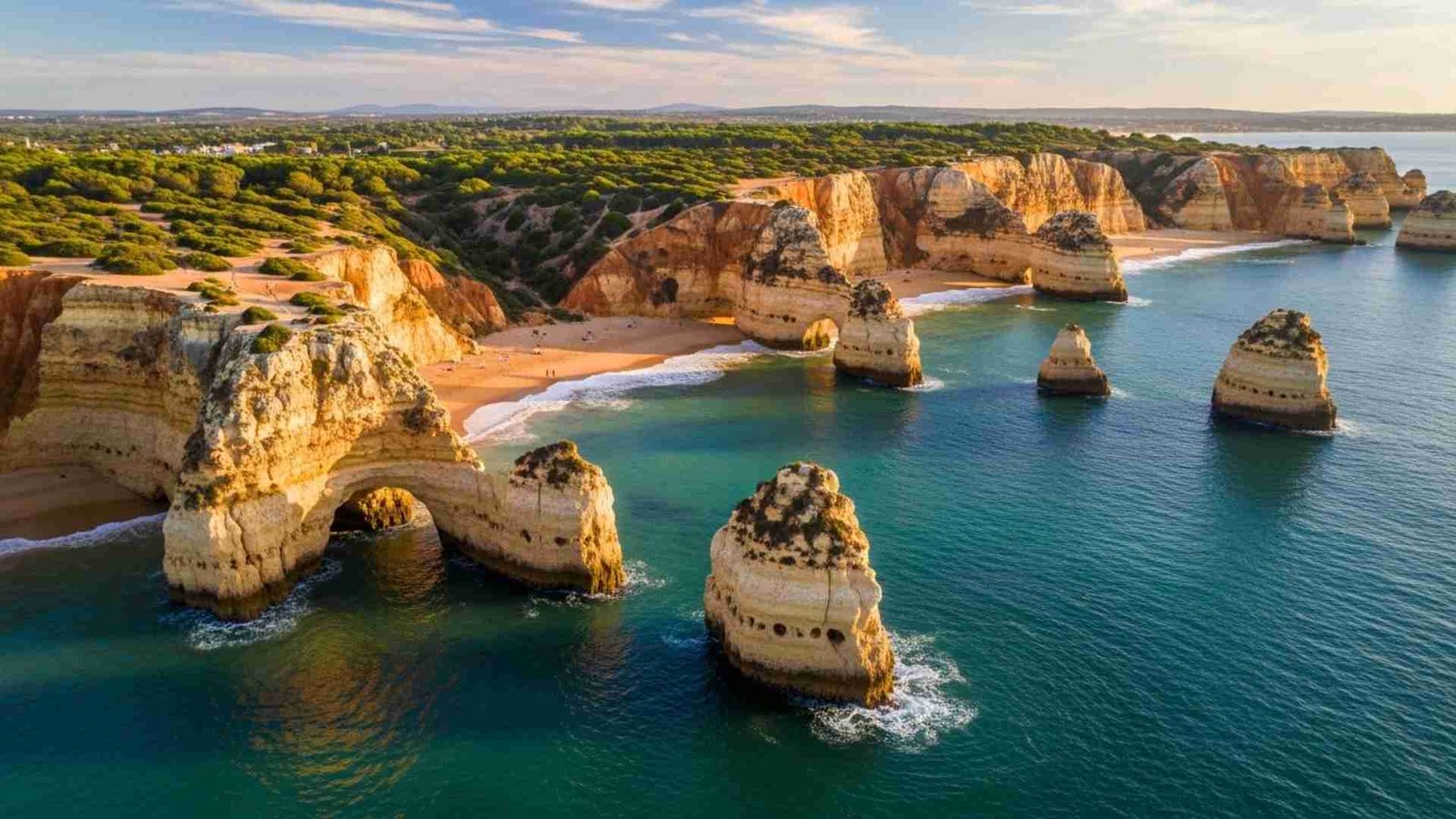
Go beyond the postcard. Think protected coves, Blue Flag standards, and real-time rules that shape your day. In 2025 Portugal holds 404 Blue Flag awards (354 coastal, 50 inland), with the Algarve leading the country—a tidy signal for water quality, safety, and services.
ou’re on a dawn path above Ponta da Piedade. Gulls, saffron cliffs, teal water. By 10 a.m., you’re on a guided kayak sliding under arches—because Benagil Cave has strict access rules: no swimming inside, no disembarking on the beach, guided entries only, time-limited. Safer for everyone; better photos too.
Practical Information:
- Logistics (punchy):
• Best months: May–June, Sept–Oct for warm seas minus peak crowds.
• Base: Faro (fly), then rent a car for small beaches.
• Algarve = 27.1% of all Portugal overnights in Q2-2025—book early for cliff-view stays. - Pro tip: Respect flagged conditions; Blue Flags aren’t decoration. Follow cave/sea-arch rules—fines are real, and conditions change quickly on Atlantic coasts.
7. Unmatched Safety & A Low-Stress Pace

Safety isn’t just a feeling; it’s a metric. Portugal ranked 7th globally on the 2024 Global Peace Index (5th in Europe). That translates to relaxed evening walks, metro rides, and late dinners without that “keep your keys between your fingers” energy.
It’s midnight in Porto’s Ribeira. Street musicians, river glow, kids with gelados, couples sharing francesinha. You check your phone, not your six. And the cultural rhythm helps—meals start later, conversation lingers, staff aren’t rushing you out the door.
Practical Information:
- Where to stay: central, walkable neighborhoods reduce late-night transit.
- Etiquette: a soft “obrigado/obrigada” goes far; keep voices low in residential lanes.
- Solo travelers: pick well-lit historic cores and use trains for intercity hops; they’re predictable and busy till late.
8. A Food Scene That’s Having a Moment (and Receipts to prove it)
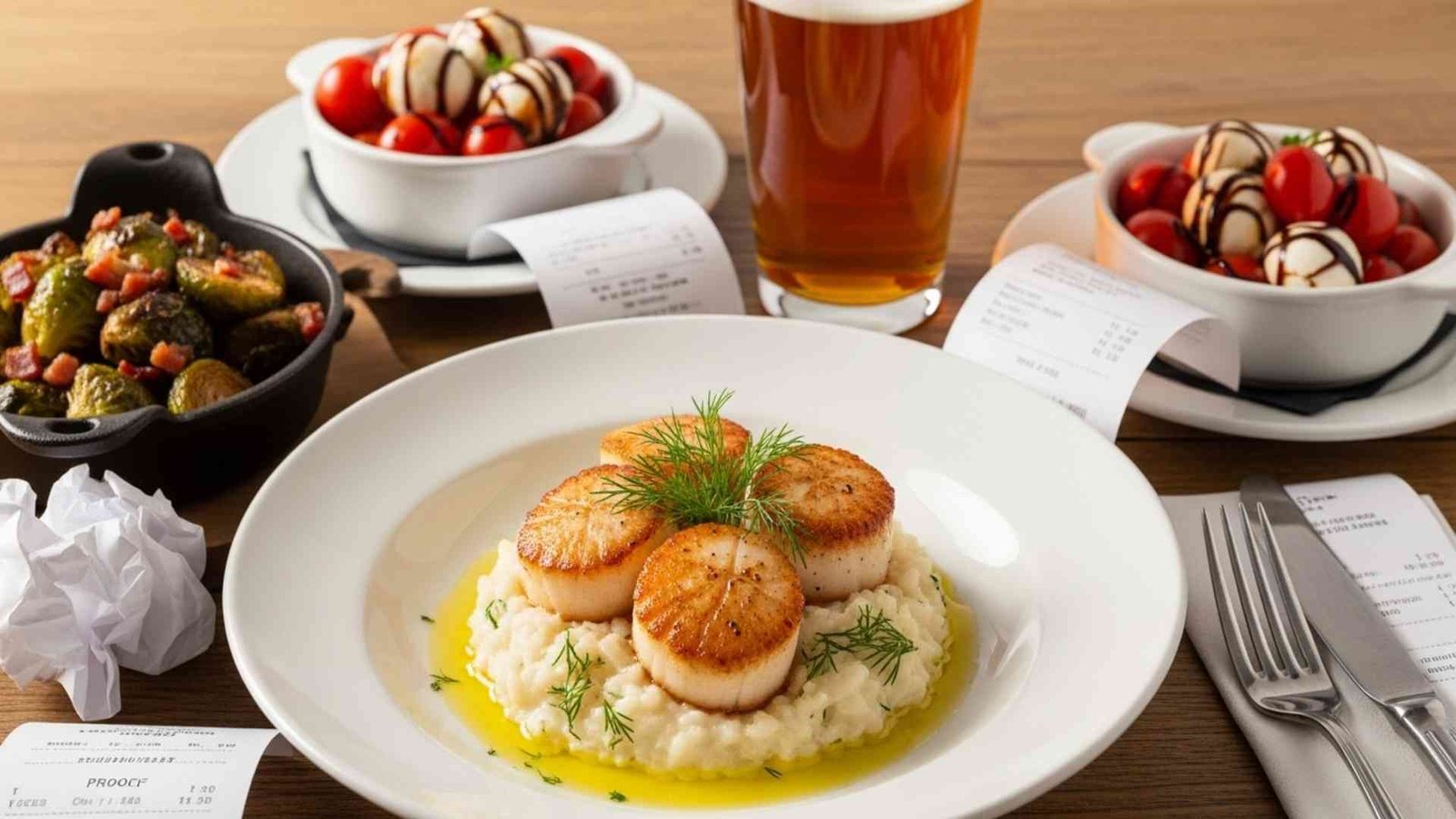
The MICHELIN Guide Portugal 2025 added 8 new one-star restaurants (38 total); 8 two-stars held firm; Green Stars and Bib Gourmands expanded—proof of depth, not just luxury. Add the 2025 return of Spain’s Repsol Soles in Portugal (70 distinctions) and you’ve got validation across guidebooks.
Here’s what I mean—lunch can be grilled sardines in a tasca, dinner might be Ocean in the Algarve or Belcanto in Lisbon the next night, and a day later you’re sipping Bairrada sparkling with leitão. It’s high-low done right.
Practical Information:
- Book starred spots 2–4 weeks out (longer in July–Sept). Scan MICHELIN’s Portugal index for current selections.
- Budget mix: tasca (€), chef’s bistro (€€), tasting menu (€€€).
- Etiquette: share plates, ask about daily catch; tip modestly for table service.
- Sustainability cue: look for Green Star kitchens emphasizing local, seasonal supply chains.
9. Easy Accessibility—from U.S. Gateways to Seamless Trains
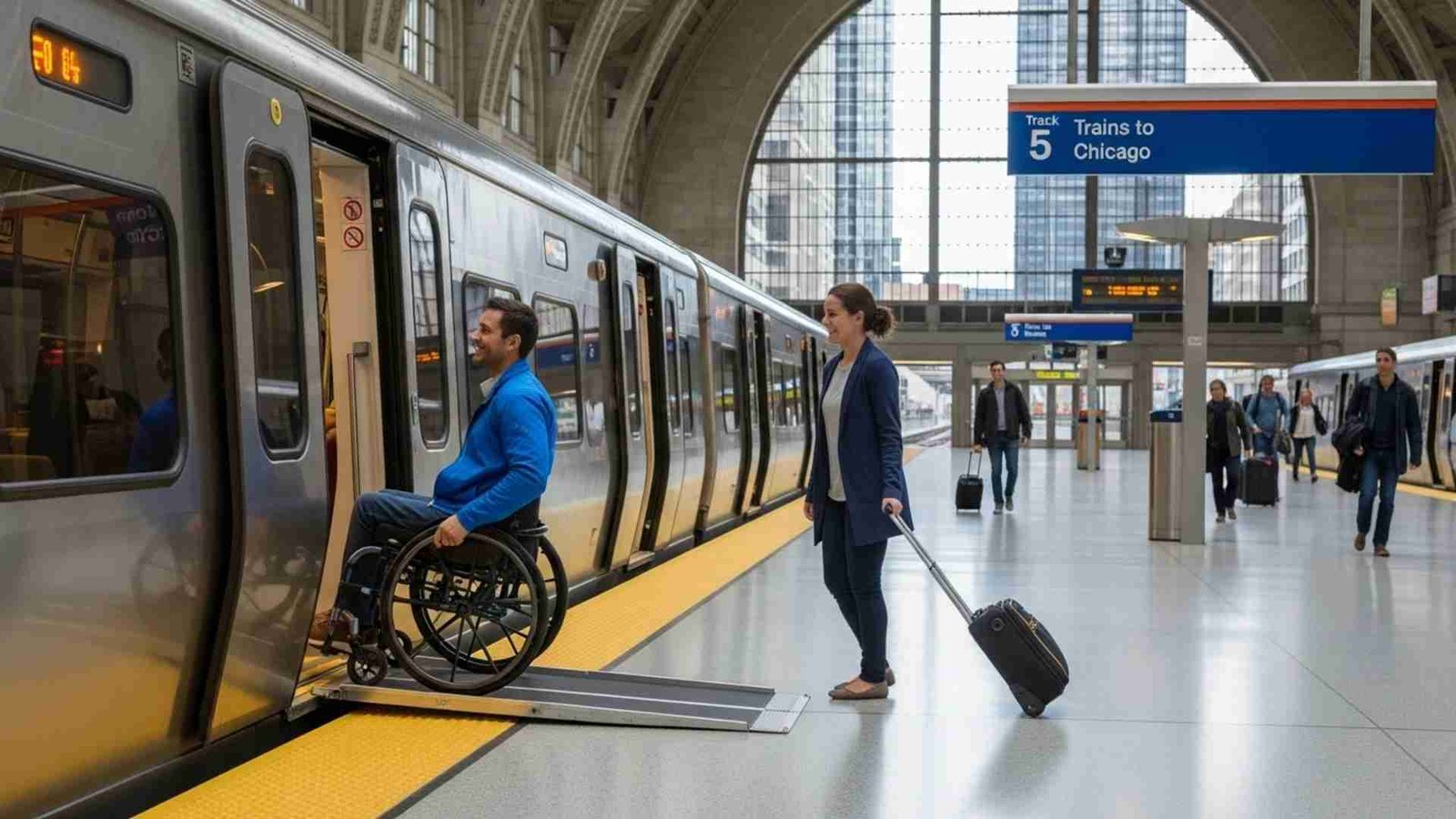
Lisbon Airport hit a record ~35.1 million passengers in 2024 (+4.3% YoY), with Portugal’s network setting national records—translation: lots of flight options and frequencies. TAP is adding U.S. routes (e.g., LAX–Lisbon, Boston–Porto, plus Azores links) for summer 2025. And there’s a new Lisbon airport at Alcochete planned by 2034 to relieve capacity.
The Alfa Pendular connects Lisbon–Porto in ≈2h35–2h58, city center to city center. No baggage fees drama, no long security. Booked seats, power outlets, and coastal views.
Practical Information:
- Fly into LIS (or OPO for the north/Minho; FAO for Algarve).
- Land, tap metro or rideshare, train north/south next morning.
- Skip a second flight—rail is faster door-to-door for Lisbon↔Porto.
10. Deep Bench of UNESCO Sites & Living Heritage

It’s not one or two heavy hitters—it’s a country-wide circuit of 17 UNESCO World Heritage Sites, from the Manueline icons of Belém to Sintra’s palaces, Évora’s Roman-Gothic layers, Guimarães’ birthplace-of-the-nation core, the Alto Douro wine landscape, Tomar’s Convent of Christ, and more.
You can stitch themes—Age of Discovery in Lisbon, medieval monastic power (Batalha/Alcobaça), wine culture in the Douro—and get a narrative, not just a checklist. And you’ll feel the continuity: azulejo art at train stations, cork in menus, saudade in Fado.
Practical Information:
- Cluster days: Belém + Sintra (from Lisbon); Tomar + Batalha + Alcobaça (one inland loop); Douro (from Porto).
- Timing: book palace/monastery entries in advance; arrive right at opening for photos without crowds.
- Respect: churches and cloisters are active sacred spaces—dress modestly, keep voices down, skip flash.
11. Azores & Madeira—Island Adventures That Feel Secret
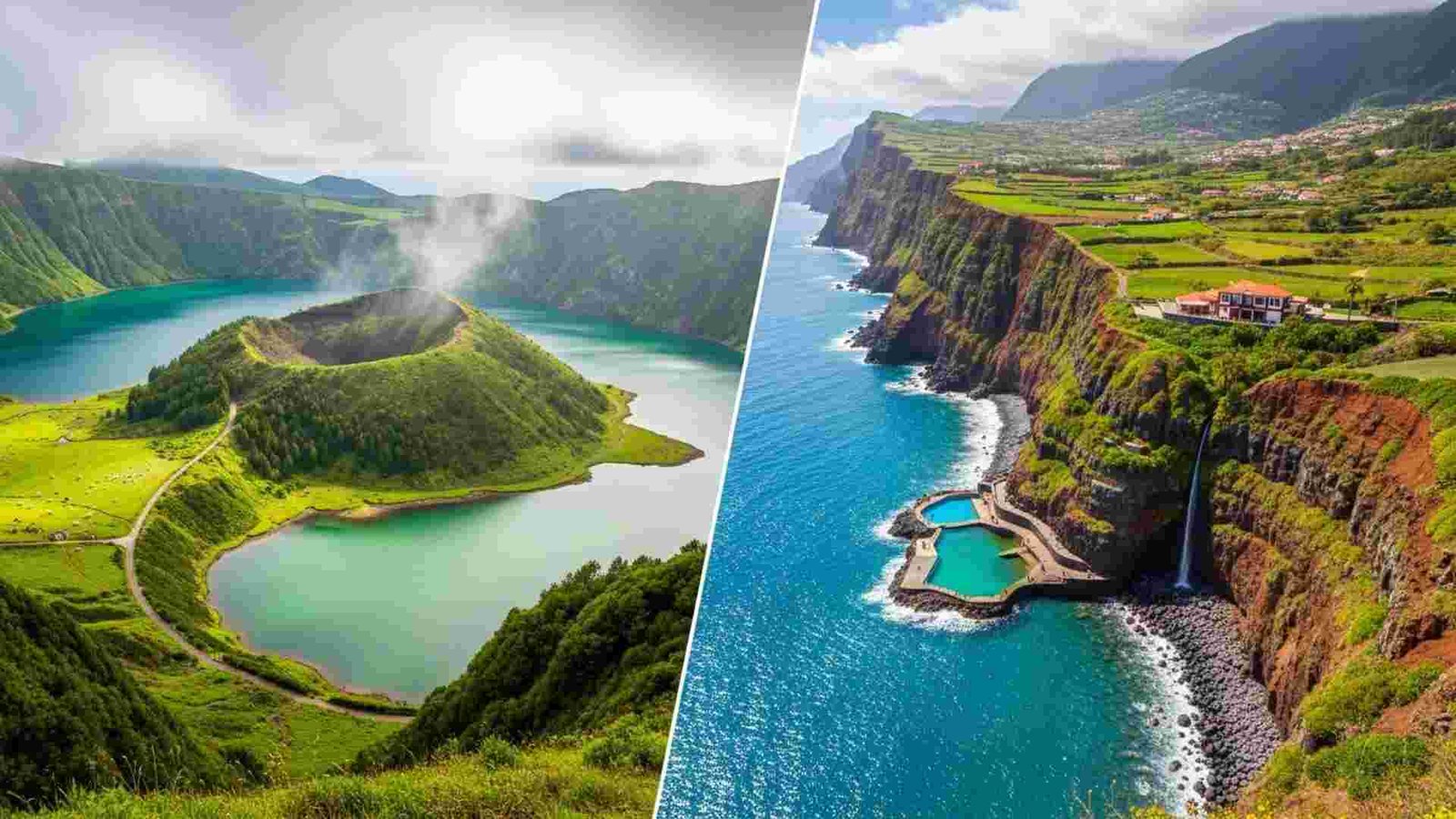
These islands are Portugal’s wild side — remote yet reachable. The Azores rise from the Atlantic like green volcanoes, while Madeira feels like a floating garden anchored by cliffs and ancient forests. Both deliver adventure with fewer crowds than the Mediterranean. In 2025, air connectivity expanded — Azores Airlines now flies direct from Boston and Toronto to Ponta Delgada, and TAP operates Lisbon–Madeira up to 9 times daily, making island-hopping surprisingly smooth.
Whale watching off Faial or Pico (peak March–October). Spring brings blue whale migrations, and local guides operate with strict eco-certification to protect marine life.Visit the emerald twin lakes of Sete Cidades, hike to Salto do Prego waterfall, and end your day soaking in Furnas’ thermal pools under the stars.Walk through the Laurisilva forest, the world’s largest surviving laurel forest (~15,000 hectares) and a UNESCO site. Hike the PR8 São Lourenço trail (6 km) for dramatic sea cliffs, then swim in the lava rock pools of Porto Moniz (3,800 m²).
Practical Information:
- Best time to visit: April–October (mild weather, active whales, ideal hiking conditions).
- Getting there: Fly into Ponta Delgada (PDL) for the Azores or Funchal (FNC) for Madeira; island-hopping flights run daily.
- Ideal duration: 5–7 days per island or 10–12 for both.
- Budget range: Mid-tier hotels start around €80–€120/night; guided whale tours from €55–€75.
- Cultural tip: Always greet guides and locals with a friendly “Bom dia” — hospitality here is intimate and community-based.
- Photography moments: Sunrise at São Lourenço, aerial drone shots of Sete Cidades crater, and the volcanic coastline of Capelinhos at golden hour.
12. Slow-Living & Wellness — Starry Skies, Thermal Pools, and Soft Days

Portugal isn’t just for sightseeing — it’s for slowing down. The Alentejo region proves this best. Its open plains, cork forests, and whitewashed villages are where time stretches. The Dark Sky Alqueva Reserve (world’s first certified Starlight Tourism Destination) offers crystal-clear Milky Way views with zero light pollution. You can kayak by moonlight, stargaze from your hotel terrace, or join night photography workshops led by astronomers.
The Terra Nostra Park pool, naturally heated to 39°C, is open to guests 24/7 and day visitors from 10:30 a.m.–4:30 p.m. It’s a mineral-rich soak under 200-year-old camphor trees. Recognized as Europe’s first World Surfing Reserve, it’s a rare blend of active wellness and mindful living — surf at dawn, nap after a seafood lunch, stroll quiet cliffs by sunset. A mix of rice fields, dunes, and barefoot luxury. No resorts, just boutique stays, vineyard dinners, and pastel sunsets that stretch endlessly.
Practical Information:
- Best time to visit: September–May for fewer tourists and cooler days; July–August if you prefer warm evenings.
- Getting there: Lisbon is the gateway — 2-hour drive to Alentejo, 45 minutes to Ericeira, and connecting flights to Furnas (via São Miguel).
- Ideal duration: 4–6 days for a full “reset” itinerary (city unwind + coastal or thermal retreat).
- Budget: Wellness hotels or spa stays average €150–€250/night; thermal entry fees around €10–€15.
- Local etiquette: Silence is respected in spas and dark-sky zones — whispering and low lights are part of the calm.
- Photography opportunities: Night skies over Lake Alqueva, steam rising from Furnas at dusk, and pastel sunsets over Comporta’s dunes.
Conclusion:
Portugal hits that rare sweet spot: soulful cities, easy prices, serious safety, and year-round sunshine—with food, wine, and UNESCO-level culture doing the heavy lifting. From Lisbon’s trams to Algarve cliffs, Douro vineyards to starry Alentejo skies, every day feels different yet effortless. Add nonstop flights, smooth trains, and remote-work friendliness, and you’ve got a trip that’s simple to plan and hard to forget. Pack light, book the big hitters early, and leave space for the small surprises—that’s where Portugal really shines.


